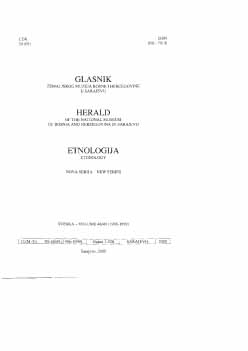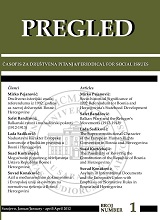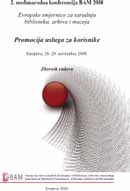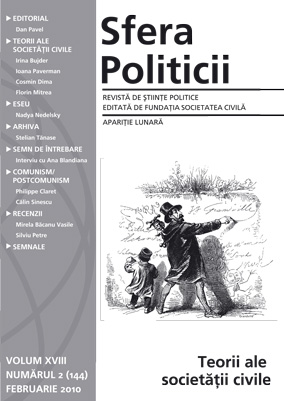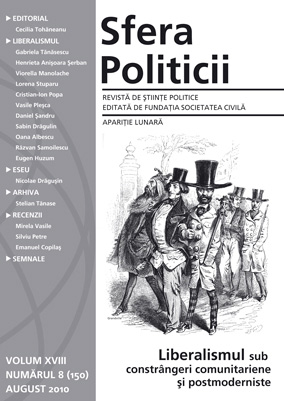
We kindly inform you that, as long as the subject affiliation of our 300.000+ articles is in progress, you might get unsufficient or no results on your third level or second level search. In this case, please broaden your search criteria.

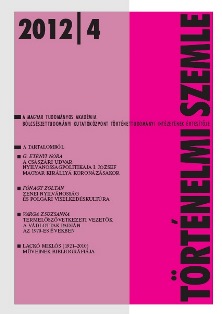
Straipsnyje aptariamas Ievos Simonaitytės romanas „Vilius Karalius“ (1977 m. leidimas) ir Vydūno veikalas „Septyni šimtmečiai vokiečių ir lietuvių santykių“ (2001 m. leidimas): abu kūriniai iliustruoja problemišką dviejų tautų sambūvį, o kito vaidmenį juose atlieka vokiškoji kultūra. Tekstai nagrinėjami prancūzo Danieliaus Henrio Pageaux imagologijos teorijos įrankiais: manija, fobija, filija ir idiokrazija. Paaiškėja, kad amžininkų darbuose į svetimąjį žvelgiama skirtingai: Vydūno veikalas grindžiamas filija, siekiama tautų lygiavertiškumo, o Ievos Simonaitytės romane vyrauja fobiškos herojų nuostatos. „Viliuje Karaliuje“ tautų koegzistavimas atsiskleidžia kaip sudėtingas darinys, lemiantis kasdienius konfliktus, į kuriuos nuolat įsivelia romano personažai dėl savo nuostatų ar skirtingo požiūrio į vokiškumą. Išryškėja kietasprandžio lietuvininko stereotipas, miesto bei kaimo priešpriešos ir kt. Vydūnas vokiečio bei lietuvio įvaizdį formuoja pasiremdamas įvairiais literatūriniais ar istoriniais šaltiniais (Johanno Wolfgango Geothe’s, Martino Lutherio ir kt. tekstais), jo požiūris į atvykėlius – vokiečius, zalcburgiečius, žydus – nėra vientisas, kuriamas gana neigiamas zalcburgiečių įvaizdis, taip pat aptariami lietuviams būdingi bruožai (savivaizdis). The representations of the Other in the works of Ieva Simonaitytė and Vydūnas are established by using two particular texts: Simonaitytė’s novel Vilius Karalius (1977 edition) and Vydūnas’s work Seven Hundred Years of German and Lithuanian Relations (2001 edition). German culture is the Other and both works describe the problematic coexistence between two nations. In order to unveil this coexistence, the theoretical and methodological instruments of the French imagologist Daniel-Henri Pageaux are used: he distinguishes four aspects of attitude towards other cultures – mania, phobia, philia, and idiocracy. The Other is perceived differently in both contemporary texts. Philia is the dominant approach in Vydūnas’s work, with the author promoting the idea of the equality of nations. By contrast, the attitude of the characters of Simonaitytė’s novel represents phobia in most cases. Since the heroes of the novel Vilius Karalius have different attitudes to, and perspectives on, German culture and since the coexistence of the two nations constantly acts as a complicating factor leading to difficulties, everyday tensions arise between them. The stereotype of the obstinate Lithuanian from Prussian Lithuania and the opposition between city and village were also detected. Vydūnas creates images of Germans and of Lithuanians by appealing to various literary and historical sources (Goethe, Tacitus, ect.). His opinions towards strangers (Germans, Salzburgians, Jews) are differentiated. Vydūnas creates a negative image of the Salzburgian and devotes much of attention to the discussion of the character of the Lithuanian (his self-image).
More...
XVIII a. antros pusės daugkartinių Gardino spaustuvės leidinių analizė rodo, kad svarbiame Lietuvos Didžiosios Kunigaikštystės (toliau – LDK) kultūros centre leisti tekstai savo tematika, žanrais, forma buvo gana skirtingi. Spausdinti įvairūs vertimai iš anglų, prancūzų, vokiečių kalbų, taip pat lenkiški originalai (grožiniai kūriniai, didaktiniai pamokymai, Gardino seimuose sakytos kalbos, pamokslai). Atkreiptinas dėmesys į tai, kad Vilniaus spaustuvių (pranciškonų, jėzuitų akademijos, bazilijonų) 17 kartų perleista Mykolo Olševskio „Broma atverta ing viečnastį“ Gardine nepasirodė nei originalia lietuvių, nei verstine lenkų kalba. Ištyrus XVIII a. antros pusės Gardino spaustuvės leidinius, daroma išvada, kad tuolaik dar nauja selektyvaus skaitymo tendencija nulėmė konkrečių tekstų pasirinkimą, o kartu ir jų populiarumą. Taip pat fiksuojamas ir tuometinės LDK visuomenės praktikuotas intensyvusis skaitymo būdas (kai tas pats tekstas skaitytas daug kartų), kurį Vakarų Europoje sparčiai keitė ekstensyvusis (kai skaityta greitai ir kuo daugiau). An analysis of the Grodno Printing House releases in the second half of the 18th century shows that among the texts of multiple publication, those that appeared in Grodno, a cultural center of the Grand Dutchy of Lithuania, were of different themes, genres, and forms. Various translations from English, French, German, as well as original publications in Polish, such as works of fiction, didactic teachings, speeches delivered in the Grodno Sejm, and religious sermons, were printed in the Grodno Printing House. It must be pointed out that the most popular Lithuanian book of the 18th century, Mykolas Olševskis’s Broma atverta ing viečnastį, which was republished 17 times by different Vilnius printing houses (e.g., the Franciscans’, the Jesuit Academy’s, and the Basilians’), was not released in Grodno. Neither an original edition of Broma, nor its translation into Polish appeared there. Investigating Grodno Printing House releases enabled us to draw the conclusion that the choice and the popularity of certain texts depended on a new tendency of selective reading. Another conclusion is that in the Grand Dutchy of Lithuania people in the second half of the 18th century most often practiced intensive reading which in Western Europe had been rapidly replaced by the extensive one.
More...
L’article présente l’histoire du voyage de Montpellier en Lituanie des plaques de cuivre représentant les plantes méditerranéennes. Ces plaques furent préparées par Pierre Richer de Belleval (1555–1632), professeur de botanique, médecin des rois et fondateur du jardin botanique de Montpellier. Les plaques furent destinées a illustrer son ouvrage magistral sur la flore du Languedoc. Longtemps considérées comme perdues, ces plaques furent retrouvées en 1760 et sauvées grâce a Antoine Gouan (1733–1821), naturaliste de l’Université de Montpellier. Ensuite elles furent achetées par Jean-Emmanuel Gilibert (1741–1814) grâce aux fonds avancés par Stanislas-Auguste Poniatowski. Gilibert les amena en Lituanie dans le but de les faire publier. Il réalisa son projet seulement partiellement en utilisant une partie des fonds pour illustrer Exercita phytologica, seu Flora Lithuanica. Des son retour en France, Gilibert négocia avec Poniatowski le retour des plaques ; le roi et grand-duc lui en fit cadeau. Une majeure partie de ces illustrations fut publiée a Lyon dans Démonstrations élémentaires de Botaniques. Apres la prise de Lyon par l’armée révolutionnaire, les herbiers lituaniens de Gilibert furent détruits et les cuivres de Belleval perdus probablement a jamais. Pierre’as Richer de Bellevalis (1555–1632) buvo karalių Henriko IV ir Liudviko XIII gydytojas. Jis dėstė anatomiją ir botaniką Montpellier (Monpeljė) universitete. Būdamas pirmuoju karališkuoju botanikos profesoriumi įkūrė miesto botanikos sodą. Lietuvos Didžiojoje Kunigaikštystėje botanikos sodai (Gardine ir Vilniuje), kaip ir daugelyje kitų Europos šalių, buvo kuriami pagal Bellevalio modelį. 1603 m. mokslininkas paskelbė publikaciją „Languedoc augalų tyrimai“ („Recherches des plantes du Languedoc“). Jis planavo plačiai aprašyti visą gausią Languedoco (Langedoko) florą. Religiniai karai ir protestantų represijos padarė daug žalos Montpellier. Botanikos sodas buvo suniokotas ir Bellevalis nepabaigė savo veikalo. Mokslininkas užsakė apie 500 vario raižinių plokščių, kuriose pavaizduoti Viduržemio jūros regiono augalai. Iki XVIII a. vidurio buvo publikuota tik dalis Bellevalio vario raižinių. Tačiau keletas Europos mokslininkų žinojo apie jų egzistavimą ir noriai rėmėsi jo darbais. Tarp jų daug žymių mokslininkų: Joseph Pitton de Tournefort (1656–1708), François Boissier de Sauvages (1706–1767), Carl Linné (1707–1778), Albert von Haller (1708–1777) ir Jean-François Séguier (1703–1784).
More...
Straipsnyje pateikiama retorinė Kristijono Donelaičio apologijos XIX a. literatūroje analizė. Aptariami gyrimo retorikos procesai: pavyzdžio topikos formavimas, to, kas nėra labai svarbu, nutylėjimas, garbingiausių dalykų išplėtimas, prakilnumo (pranc. sublime) retorikos naudojimas. Donelaitis XIX a. lietuvių tekstuose tapo savotiška metonimija, kuria buvo išreiškiamas lietuvių kalbos ir kultūros gyvybingumas. Tačiau negalima teigti, kad jis buvo vertinamas vienareikšmiškai, – požiūrį lemdavo tautinės tapatybės samprata, konfesinis priklausomumas, estetinės nuostatos. This article discusses the ways in which an 18th century poet appeared close to, and the ways in which he appeared distant from, the creators of an engaged 19th century discourse. A rhetorical analysis of the apologia of Kristijonas Donelaitis is provided. Processes of the rhetoric of praise are discussed: the formation of the topic of the example; the intentional omission of what is less significant; the magnification of what is most honorable; and the employment of the rhetoric of sublimity. In 19th century Lithuanian texts, Donelaitis becomes a sort of metonymy for expressing the vitality of the Lithuanian language and culture. Still, it cannot be claimed that he was assessed unequivocally – the attitude toward him was determined by conceptions of national (ethnic) identity, religious affiliation, and aesthetic principles. Regardless of divergent religious and political developments, at the beginning of the century a tendency to emphasize the integrity of Lithuanian territories is evident. Some literary scholars combine Donelaitis’s homeland into a single territorial unit together with Aukštaitija (Highlands) and Žemaitija (Samogitia). Religious affiliation becomes especially important from the middle of the century onwards, when following the insurrections the religious factor becomes dominant in culture and Catholicism comes to be seen as one of the principal supports for upholding ethnic identity. In such a context Protestant Lithuania Minor and its representative Kristijonas Donelaitis are not emphasized: the creators of didactic prose are much more interested in propagating the ideology of Catholicism. Toward the end of the century these differences emerge in the conflict betwe en Bishop Antanas Baranauskas and the young aušrininkai, although the national aspects of Donelaitis’s literary work seem to be considerably more important than any differences in religious affiliation.
More...
Si les Saisons ont été traduites en une quinzaine de langues, on ne peut que regretter, en revanche, l’absence de véritable traduction française. Plus généralement, les Français ont, depuis le XIXe siecle et jusqu’a nos jours, méconnu le grand poete lituanien. Cette communication, qui a pour objet la réception de Donelaitis en France, fait le triste constat de la quasi absence des Saisons dans la critique française. Soit l’oeuvre est purement et simplement méconnue, soit elle est évoquée en quelques lignes, lesquelles se contentent le plus souvent de ressasser des clichés. A défaut de lire Donelaitis en lituanien, les Français pouvaient le lire en allemand, surtout depuis la traduction de Nesselmann en 1869. Et pourtant, la pauvreté des commentaires témoigne éloquemment de l’absence de lecture véritable. Cette communication se propose d’établir le bilan des comptes rendus rédigés par des francophones et des Français depuis la fin du XIXe siecle. Pour terminer sur une note plus positive, elle esquisse une étude imagologique de la représentation des Français dans les Saisons. On verra que si les Français ont négligé, a tort, Donelaitis, ce dernier s’en est vengé par anticipation, en accumulant les stéréotypes dépréciatifs a leur égard… SANTRAUKA. „Metai“ yra išversti į penkiolika kalbų, bet į prancūzų kalbą vertimo iki šiol nėra. Reikėjo sulaukti Schleicherio ir Nesselmanno vokiško vertimo XIX a. pabaigoje, kad Prancūzijoje atsirastų bent retos užuominos apie šį kūrinį. Iš tiesų tai tebuvo straipsnių apie vokiškuosius vertimus recenzijos. Mano straipsnyje, kurio objektas yra Donelaičio recepcija Prancūzijoje, liūdnai konstatuojama, kad „Metai“ nepatraukė prancūzų literatūros kritikų dėmesio. Kūrinys yra arba visai nežinomas, arba pristatomas keliomis eilutėmis, kuriose dažniausiai pasitenkinama bendromis frazėmis. Kad ir nemokėdami lietuviškai, prancūzai turėjo galimybę skaityti poemą vokiškai, kai 1869 m. pasirodė Nesselmanno vertimas. Kadangi komentarų buvo nedaug, tad tikrojo skaitymo nebuvo. Net jei 1870 m. germanofobija Prancūzijoje galėtų iš dalies paaiškinti vokiškųjų vertimų recenzijų nebuvimą, tai nepaaiškina, kodėl stigo dėmesio Rėzos darbams, pasirodžiusiems 1818 m., kai visa Europa, veikiama vokiečių romantizmo, reiškė egzaltuotą susižavėjimą folkloru. Deja, man nepavyko rasti jokios Rėzos darbų prancūziškos recenzijos. Pagaliau paradoksalu, kad rašytojas, skleidęs lietuvybę, turėjo kentėti skaitomas vokiškai Prancūzijoje. Tai nepateisina, kad Donelaitis ir po Antrojo pasaulinio karo Prancūzijoje liko nežinomas.
More...
At first glance, the attempt to find common ground between Edmund Burke and Kristijonas Donelaitis is gratuitous and doomed to fail: biographically, nothing connects them, and they cannot even have heard of each other. Yet what they at least have in common is a deep-seated interest in the notions of time and duration: for the Lithuanian poet, the ever-recurring seasons provide human life with substance and pattern; for the Irish philosopher, they are of the essence of what nations are all about. As a critic of contractual theories, Burke argues that society is eternal, and proceeds from a primaval contract that was always there. He is particularly critical of the view that the earth belongs exclusively to the living, a view that has come to be associated with Thomas Jefferson: for Burke, if such were really the case, men would be no better than “the flies of a summer.” This image immediately conjures up a vision of the summer months, and makes us realize that Burke and Donelaitis are in fact kindred spirits: they share a common Protestant faith, a concern for the downtrodden peasantry, a view of the social contract as primaval, and the belief that men belong to deeply rooted, historical communities that make them truly human. Iš pirmo žvilgsnio bandymas rasti kažką iš esmės bendro tarp Edmundo Burke‘ o ir Kristijono Donelaičio atrodo lemtas žlugti: jų biografijų niekas nesieja ir vienas apie kitą jie nieko nebuvo girdėję. Tačiau bent vienas dalykas jiems bendras – tai dėmesys laikui ir trukmei: lietuviui poetui pasikartojantys metų laikai žmonių gyvenimui suteikia turinį ir formą, o airiui filosofui jie sudaro tautų esmę. Kaip sutarties teorijų kritikas Burke‘as teigia, kad visuomenė yra amžina ir neatsiejama nuo pirmykštės sutarties. Jis ypač nepritaria požiūriui, kad žemė priklauso tik gyviesiems. Tai Thomo Jeffersono mintis, bet jeigu ji būtų tikrai teisinga, tuomet ir žmonės nebūtų daugiau negu „vasaros musės“. Šis įvaizdis iš karto asocijuojasi su vasaros mėnesiais. Tada mes suprantame, jog Burke‘as ir Donelaitis išties giminingos dvasios: jiedu dalijasi bendru protestantišku tikėjimu, abiem rūpi vargstantys valstiečiai, į socialinę sutartį jie žiūri kaip į ateinančią iš amžių glūdumos ir abu tiki, kad žmonių priklausymas gilias šaknis turinčioms istorinėms bendruomenėms padaro juos tikrais žmonėmis.
More...
2014 m. buvo švenčiamas evangelikų liuteronų kunigo ir poeto Kristijono Donelaičio 300-ųjų gimimo metinių jubiliejus. Šiame straipsnyje, analizuojant dalį jubiliejiniais metais pasirodžiusių mokslinių bei publicistinių tekstų, išskiriamos svarbiausios temos, kurios padeda suvokti Apšvietos epochos įtaką XVIII a. europinei ir Prūsijos karalystės kultūros raiškai, gyventojų savimonės transformacijoms, jų mentaliniams pokyčiams, visuomenės ir valdžios, visuomenės ir bažnyčios santykių raidai. Autorė pastebi, kad kalbant apie Donelaičio laikmetį, apie faktorius, kurie veikė šios asmenybės kūrybines ir ganytojiškas intencijas, yra būtina visos Prūsijos valstybės politinio, kultūrinio bei europinio konteksto aprėptis, kurioje ryškėtų trijų dominuojančių segmentų „Donelaitis – Prūsijos Lietuva – Prūsijos karalystė“ seka, nes Prūsijos istorija tiesiogiai veikė ir tos valstybės integralią dalį – Prūsijos Lietuvą, kurioje gyveno lietuviškai kalbėję lietuvininkai. 2014 was the year in which the 300th anniversary of the birth of Kristijonas Donelaitis, an Evangelical Lutheran pastor and poet, was celebrated. In this article some of the scholarly and journalistic texts that appeared in this jubilee year are analyzed, namely those that help us understand the effects of the Enlightenment on 18th century expressions of culture in Europe and in the Kingdom of Prussia; the transformations of people‘s self-consciousness and their mental changes; and the evolution of relations between society and government, and society and church. The author observes that seriously discussing the period in which Donelaitis lived and the factors that shaped his creative and pastoral intentions, absolutely requires a full grasp of the entire context of the Prussian state‘s political, cultural, and general European environment wherein the sequence of three dominant segments Donelaitis – Prussian Lithuania – Kingdom of Prussia becomes clear, inasmuch as the history of Prussia had a direct influence on an integral part of that state, namely Prussian Lithuania, in which the Lithuanian-speaking inhabitants lived.
More...
Ištyrus Kristijono Donelaičio „Metų“ žodyną buvo nustatyta, kad nekaitomų žodžių poemoje yra daugiau nei 150, dalis jų dažnai kartojasi. Į aukščiausias dažninio žodžių sąrašo pozicijas pateko jungtukai, dalelytės, prielinksniai, kiek žemiau įvardis savo, jaustukas ak, prieveiksmis daug. Visi jie (išskyrus savo) yra nekaitomi žodžiai, kurių dauguma – ir, kad, jau, kaip, o, taip, ar, dar, tikt, bet, vis, nei, juk, štai, irgi – gali atlikti dalelyčių vaidmenį. Detaliau nagrinėtos ir, jau, juk, štai, tikt dalelytės, kur ir kaip jos vartojamos poetiniame kūrinyje. Ar šių žodžių gausa poemoje – tai Kristijono Donelaičio siekis emocingumo ir pasakojimo gyvumo, ar visgi tai paranki leksinė priemonė eiliavimo principui išlaikyti? Tai pagrindiniai klausimai, į kuriuos atsakymus pateikė „smulkiosios“ leksikos analizė. Kad atsiskleistų „Metų“ žodyno savitumai, buvo lyginami Antano Baranausko „Anykščių šilelio“ ir Broniaus Granausko „Jaučio aukojimo“, išskirtinių kūrinių lietuvių kalba, dažniausių žodžių 20-tukai. Nors šie meniniai kūriniai atsirado skirtingu laiku ir skirtingose vietose, visuose trijuose rasta nekaitomų žodžių, kurie pateko į visų (ir, kad, kaip, taip / teip, iš, ant) arba dviejų (jau, o, tikt / tik, vis, dar, kai, bet, į, su) dažniausiųjų 20-tukus. Pažymėtina, kad daugelis jų gali atlikti dalelyčių funkciją, kaip antai, „Metuose“ tokių rasta 14 iš 20-ies. An analysis of Kristijonas Donelaitis’s lexicon reveals that the poem has more than 150 noninflectional words, many of them oft-repeated. Among the most frequently repeated are certain conjunctions, particles, and prepositions. Somewhat less frequent are the pronoun savo, the interjection ak, and the adverb daug. All of these (except savo) are noninflectional; the majority of them – ir, kad, jau, kaip, o, taip, ar, dar, tikt, bet, vis, nei, juk, štai, irgi – can also function as particles. Of these, the particles ir, jau, juk, štai, tikt have been investigated in greater detail with respect to where and how they have been used in a work of poetry. Is the abundance of these words in the poem due to Donelaitis’s quest for emotional expression and narrative liveliness, or is it just a handy lexical means for maintaining a principle of versification? These are the questions to which an analysis of the “small-sized” lexicon provided the answers. In order to reveal the special character of the vocabulary of Metai (The Seasons), the author of this paper decided to compare the 20 most frequently used words in Donelaitis’s just-mentioned poem; Antanas Baranauskas’s Anykščių šilelis; and Bronius Granauskas’s Jaučio aukojimas, the latter two being distinctive works in the Lithuanian language as well. Although these three works of art hail from different times and places, they feature noninflectional words that occur either in all three (ir, kad, kaip, taip / teip, iš, ant) or just in two (jau, o, tikt / tik, vis, dar, kai, bet, į, su) of their 20 most requently used words. It‘s worth noting tha
More...
Siekiant išnaudoti Lietuvoje ne itin populiarios sakytinės istorijos teikiamas galimybes ir turint omenyje tai, jog nėra daug šviesių žmonių, gebančių pasidalyti atsiminimais apie gyvenimą Lietuvoje iki Antrojo pasaulinio karo, nutarta atlikti mikroistorijos tyrimą apie Kauno Šančių mikrorajoną XX a. ketvirtame dešimtmetyje. Šančiai buvo viena sparčiausiai augančių miesto dalių, nemažai naujakurių kėlėsi į Šančius iš provincijos ieškodami darbų Kaune. Šančiuose veikė kelios stambios gamyklos, dešimtys smulkesnių dirbtuvių ir įstaigų. Todėl ir mikrorajono gyventojų daugumą sudarė darbininkai ar žemesnieji tarnautojai, o Šančiai buvo laikomi darbininkišku rajonu. 2014-ųjų vasarą buvo atlikti trys nestruktūruoti interviu su esamomis ar buvusiomis Šančių gyventojomis. Interviu metu informantės pasidalijo savo vaikystės patirtimis Šančių „Krantų“ kvartale. Surinkta medžiaga leido papasakoti istoriją apie Šančių kasdienybę XX a. ketvirtame dešimtmetyje, pristatyti Šančių gyventojų socialinę, ekonominę ir etninę įvairovę, pažvelgti į jų šeimyninį gyvenimą, darbą, laisvalaikį bei tarpusavio santykius. Oral history is still not very popular in Lithuanian historiography, so following the trends of foreign historical scholarship, the author decided to carry out a microhistorical study of a neighborhood in the Šančiai district of Kaunas in the 1930s. Šančiai was growing fast during the interwar period: there were some factories and workshops opened, and many people moved to Šančiai from rural areas looking for jobs and a beginning of a new chapter in their lives. A lot of the residents were blue-collar or white-collar workers, and Šančiai was considered a working-class district. In order to explore the history of a certain Šančiai neighborhood, oral history was used. In the summer of 2014, three non-structured interviews with former residents of Šančiai were made. During the interviews, the informants shared their memories of growing up in the Krantai neighborhood and their recollections of families and neighbors with their occupational activities and day-to-day experiences in Šančiai. The collected information (including photographs from personal archives) allow us to tell a story about everyday life in Šančiai in the 1930s; to show the social, economic, and ethnic diversity of the residents; to present their family life, leisure activities, work, and business; to evaluate their living conditions and their standard of living; and to reveal their interpersonal relations within the community.
More...
Straipsnyje aptariami sunkumai, su kuriais susiduriame šiandien skaitydami ir bandydami interpretuoti Donelaičio tekstus. Viskas, kalbant apie Donelaičio „Metus“, yra kontroversiška. Pavyzdžiui, ar jie moko nuolankumo, ar yra maištinga politinė satyra? Argi tas nuolankumas taip pat nėra išjuokiamas? Pagrindinis dėmesys skiriamas: a) tam, ką galėtume pavadinti atpažįstamu donelaitišku kalbėjimu, jo poetinio stiliaus žymėms; ir b) toms „etiketėms“, kurios priskiriamos jo tekstams. Kitaip tariant, tam, kas pažymėta ir atkreipia į save dėmesį Donelaičio tekstuose, ir tam, ką pabrėžia, pažymi ir kaip sudėlioja akcentus literatūros tyrinėtojai bei kritikai, rašydami tekstus apie Donelaitį. Pagrindinis straipsnyje nagrinėjamas Donelaičio tekstas – „Metai“, bet pažvelgiama ir į pasakėčią „Pasaka apie šūdvabalį“, siekiant paaiškinti „Metų“ naratyvumą, hegzametro pasirinkimą. Žvalgantis po Donelaičio tekstų ir tekstų apie Donelaitį laukus bei aiškinantis „Metų“ skaitymo sunkumų priežastis ar galimus problemų sprendimo būdus, pasitelkiama postklasikinės naratologės Marie-Laure Ryan naratyvumo modų taksonomija, Walterio Benjamino alegorijos kaip griuvėsių sąvoka. The article discusses the challenges we face today when trying to read and interpret the texts of Kristijonas Donelaitis. Everything about his The Seasons is controversial. For example, does it teach humility, or it is a rebellious political satire? And is not that humility mocked as well? The main focus is on a) what might be called the recognizable Donelaitesque speech, the marks of his poetic style; and b) those “labels” that are attributed to his texts. In other words, what is marked and draws attention to itself in Donelaitis‘s texts, and what is emphasized, noted, and foregrounded by literary scholars and critics writing texts about Donelaitis. The Seasons is the source text examined, but a glance at the fable The Tale about the Beetle is also cast. In exploring Donelaitis’s texts and the texts about Donelaitis and in explaining what the causes of difficulties in understanding The Seasons might be as well as possible solutions of them, Marie-Laure Ryan‘s taxonomy of narrativity modes and Walter Benjamin’s concept of allegory as ruin were very enlightening.
More...
Motyvų skelbti XIX a. Liudviko Rėzos ir Franco Tecnerio dedikacijas ir jų vertimus buvo keletas. Problema ta, kad ligi šiol į šiuos kūrinius nė karto nebuvo pažiūrėta atidesniu žvilgsniu. Švenčiant 300-ąsias Donelaičio gimimo metines per pranešimus tarptautinėse konferencijose norėta akademinei universitetų bendruomenei paskleisti naujų žinių apie poetą ir prikelti iš užmaršties šiuos proginės retorinės kūrybos reliktus, prisodrintus įdomios ir naudingos informacijos apie vainikuotą „poetų karalių“ Donelaitį, jo kūrybos vertę ir lietuvininkų būdą Mažojoje Lietuvoje. Ir Rėzos, ir Tecnerio dedikacijose darbšti, gyvybinga, dora lietuviškai šnekanti Donelaičio gentis (Zauerveinas ją vadina švelniu deminutyvu giminėlė), nors vilko sunkią baudžiavos naštą, mokėjo džiaugtis jai skirta būtimi. Here are two 19th century dedications directly associated with the name of Kristijonas Donelaitis and written by Martin Ludwig Rhesa and Franz Oskar Tetzner. There are several reasons for publishing them with their translations into Lithuanian. These dedications are interesting as original texts filled with useful information about Donelaitis himself; the response to, and evaluation of, his work; and the situation of the Lithuanian language and its speakers in 19th century Lithuania Minor. During the 300th anniversary of his birth it was deemed appropriate to acquaint the academic public with new data related to Donelaitis and to call attention to these remnants of occasional rhetorical literature now rarely remembered and almost forgotten. Both dedications frame the 19th century and extend the public literary life of Kristijonas Donelaitis; they fill in the picture of the “king of poets” and his human character as well as recall the way of life and customs of these “virtuous and industrious” Lithuanians who once lived along the shores of the poet’s native Rominta River.
More...
Straipsnio tikslas – mėginti apibendrinti Donelaičio įvaizdį XX a. poezijos korifėjų – Justino Marcinkevičiaus, Marcelijaus Martinaičio ir Sigito Gedos – tekstuose, pasitelkus esmines kultūros geografų nuostatas ir aptariant kraštovaizdžio reikšmę bendruomenės kultūrai. Skirtingos analizuojamų autorių rašymo strategijos lemia skirtingą poetinių tekstų perskaitymo būdą – arba orientuojamasi į plačias emociškai stiprių įvaizdžių sukeliamas asociacijas, neištrūkstant už struktūruotos kalbos ribų, arba pasiduodama pasklidusioms emocijoms, nusikeliant į menamą ikisąvokinės tikrovės lygmenį. Vis dėlto Donelaičio įvaizdžio prasmės menkai priklauso nuo pasirinktų strategijų: sovietinės Lietuvos kontekste Donelaičio figūra koncentravo kultūros brendimo, tautos telkimosi ir pastangų įsigyventi savoje vietoje aspektus, svarbius įkvepiančių paralelių ieškančiai, savarankiškumą praradusiai bendruomenei, ir buvo suvokta kaip stabilumo, susigrąžinus prarastį, garantas. The aim of the article is to discuss the image of Donelaitis in the poetry of Justinas Marcinkevičius, Marcelijus Martinaitis, and Sigitas Geda as revealed by an analysis of their ties to cultural geography and their appreciation of the significance of the landscape for the culture of a particular community. The different strategies of writing chosen by these authors suggest different ways of reading them: the reader can be led by the associations provoked by emotionally charged images and not transgress the boundaries of structured language, or (s) he can submit to scattered emotions and enter the imaginary realm of so-called preconceptual reality. Nevertheless, the meanings of Donelaitis’s image depend only weakly on the strategy chosen: in the context of Soviet Lithuania, the figure of Donelaitis pulled together aspects of a nation’s maturation and its efforts to persevere in its place. It is these aspects that were very important to a community that had lost its independence and was looking for inspiring parallels to its situation. In this case the image of Donelaitis appeared as a guarantee of stability after the regaining of what had been lost.
More...
Straipsnyje lyginamos XX a. trečiajame dešimtmetyje gimusių poetų – lietuvių Justino Marcinkevičiaus, Marcelijaus Martinaičio ir latvių Imanto Zieduonio – laikysenos kultūros lauke sovietmečiu ir jų pelnytas simbolinis kapitalas. Laikysenų lyginimo pagrindą sudaro šių poetų kultūrinis vaidmuo jų gyvenamo laikotarpio visuomenėje, jų kūrybos recepcija bei pačios jų kūrybos santykis su tautosakine tradicija. Marcinkevičius, Martinaitis ir Zieduonis savo kūryboje ne tik stipriai rėmėsi liaudies kultūra ir folkloru, bet ir angažavosi kaip prigimtinės kultūros tradicijos puoselėtojai. Bendralaikiai skaitytojai Marcinkevičių ir Zieduonį suvokė kaip svarbiausių tautos rūpesčių reiškėjus, kurie veikė ne tik literatūros, bet ir politikos lauke, savose visuomenėse atliko moralinio autoriteto vaidmenį. The author compares the attitudes that three poets born in the 1930s – the Lithuanians Justinas Marcinkevičius and Marcelijus Martinaitis and the Latvian Imants Ziedonis – evinced in Soviet-era culture and the symbolic capital they earned. The comparison is based on the cultural role these poets played in their societies, the way their work was received, and the connections of this work with the folkloric traditions. Marcinkevičius, Martinaitis, and Ziedonis not only strongly based themselves on folk culture and folklore but also deliberately positioned themselves as champions of traditional native culture. Contemporary readers took Marcinkevičius and Ziedonis to be expressing their nations’ most important concerns as writers engaged not only in the literary field but in politics as well and serving their societies as moral authorities. The article discusses what moral compromises from the authors themselves and their society this basically sound program of fostering native national culture required – a program realized in a literary space sanctioned by the government and executed following a self-chosen tactic of voluntary obedience and loyalty.
More...